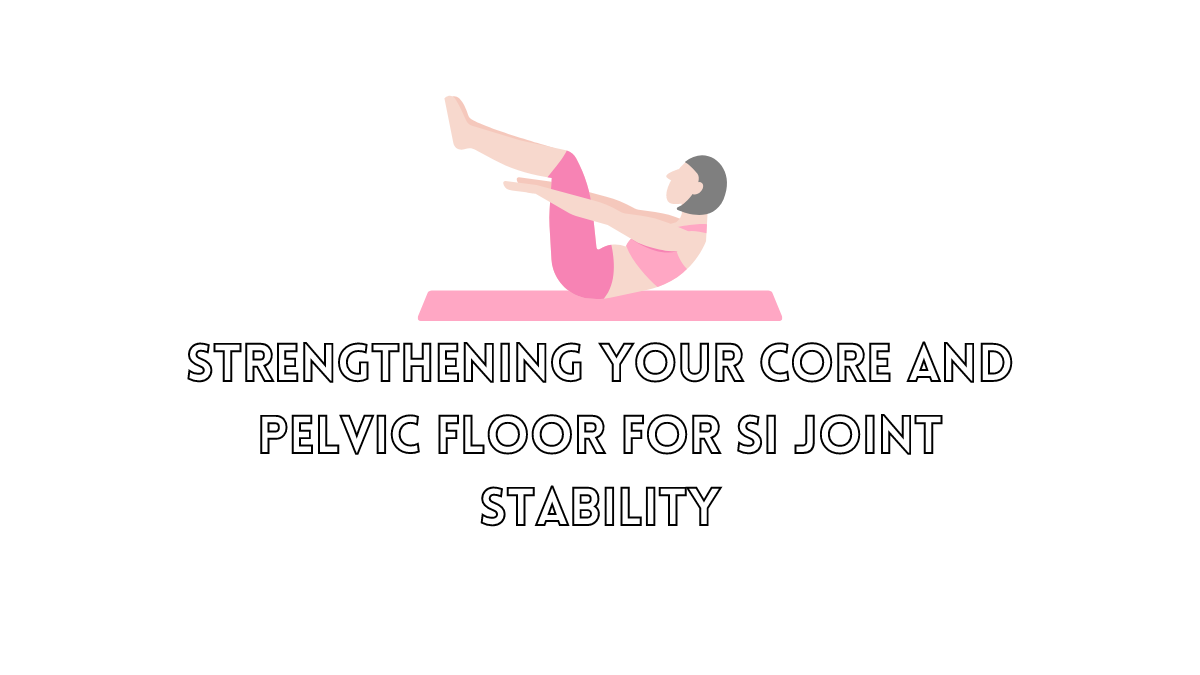Strengthening Your Core and Pelvic Floor for SI Joint Stability

Learn how a strong core and pelvic floor can support your SI joint and improve overall stability.
WatchYour sacroiliac (SI) joint is a small but mighty part of your body that plays a crucial role in your overall movement and stability. When it comes to keeping your SI joint healthy, two key players are your core and pelvic floor muscles. These muscles work together to provide the support your SI joint needs, helping you move pain-free and with confidence. In this blog, we’ll dive into the importance of these muscles and how strengthening them can help you achieve better SI joint stability.
Understanding the SI Joint: A Quick Recap
The SI joint connects the base of your spine (the sacrum) to the iliac bones of your pelvis. It’s responsible for transferring the load between your upper body and lower body and plays a significant role in your body’s overall stability. However, when the muscles surrounding the SI joint are weak or imbalanced, this joint can become unstable, leading to pain and discomfort.

Why Your Core Matters for SI Joint Health
Your core is more than just your abs. It’s a group of muscles that includes your abdominal muscles, back muscles, and the muscles around your pelvis. These muscles act like a natural corset, providing support to your spine and pelvis. When your core is strong, it helps keep your SI joint in proper alignment and reduces the risk of injury.
How Weak Core Muscles Affect the SI Joint:
- Reduced Stability: Weak core muscles can’t adequately support your spine and pelvis, leading to SI joint instability.
- Compensation: When your core is weak, other muscles in your body may compensate, leading to imbalances that can strain the SI joint.
- Increased Pain: A weak core can exacerbate existing SI joint pain or even be the cause of new pain, as the joint is less supported.
The Role of the Pelvic Floor in SI Joint Stability
The pelvic floor is a group of muscles at the base of your pelvis. These muscles support your bladder, bowel, and uterus, but they also play a critical role in stabilizing your pelvis and SI joint. A strong pelvic floor helps maintain proper alignment and supports the weight transferred through the SI joint during movement.
How a Weak Pelvic Floor Affects the SI Joint:
- Poor Pelvic Alignment: A weak pelvic floor can lead to a misaligned pelvis, which can pull the SI joint out of position and cause pain.
- Decreased Support: Without adequate strength, the pelvic floor can’t provide the necessary support to the SI joint, leading to instability.
- Increased Risk of Injury: Weakness in the pelvic floor can increase your risk of injury, especially during activities that place stress on the pelvis, like lifting or running.
Strengthening Your Core and Pelvic Floor
To support your SI joint, it’s essential to focus on exercises that strengthen both your core and pelvic floor. Here are some key exercises that can help:
- Deep 360 Breathing: Engage your deep core muscles by practicing dep 360 breathing. Sit or lie down in a comfortable position, place one hand on your chest and the other on your belly. Inhale into your sides, back, front and pelvis equally. Exhale by lifting the pelvic floor, tightening the core, then exhaling the ribs back in space. [Watch]
- Dead Bugs: Lie on your back with your arms extended toward the ceiling and knees bent at 90 degrees. Slowly lower one arm and the opposite leg toward the floor, keeping your lower back pressed into the ground. Return to the starting position and switch sides. Start [here] for a less advanced version. [Watch]
- Bridge with Squeeze: Place a small ball between your knees and perform a bridge by lifting your hips off the floor. Squeeze the ball as you lift, which engages both your inner thighs and pelvic floor muscles. This exercise promotes stability in the pelvis and SI joint. [Watch]
- Bird Dog: Start on all fours, extend your right arm forward and your left leg back, keeping your core tight. Return to the starting position and switch sides. This exercise strengthens the muscles around your spine and pelvis, improving overall stability. [Watch]
- Side-Lying Leg Lifts: Lie on your side with your legs straight. Lift your top leg while keeping your core engaged and your pelvis stable. This exercise targets the gluteus medius, a muscle that supports your pelvis and SI joint.

Strengthening your core and pelvic floor is essential for maintaining SI joint stability. By incorporating these exercises into your routine, you can reduce pain, improve your movement, and protect your SI joint from further injury. Remember, a strong core and pelvic floor aren’t just about looking good—they’re about feeling good and staying active without discomfort. Start strengthening today, and feel the difference in your SI joint health!
Live Confidently,
Jen
 Jen Landry
Jen Landry 